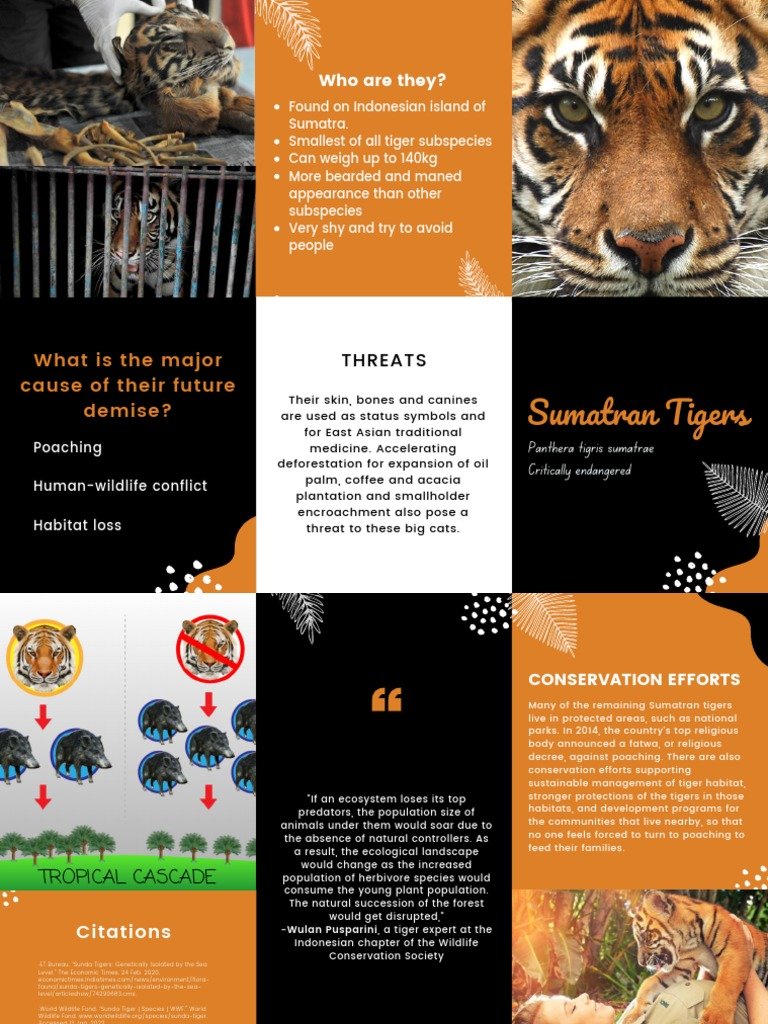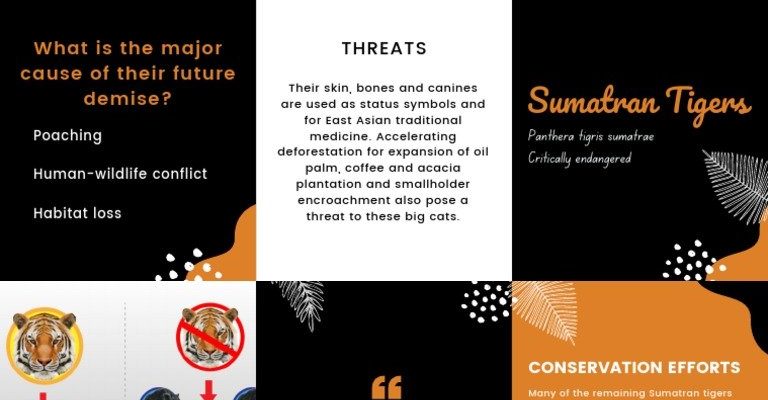
Imagine a stealthy shadow slipping through the dense rainforest, muscles rippling as it navigates its territory. That’s the Sumatran tiger for you! These tigers are equipped with a big appetite and impressive hunting strategies. Thinking about their diet and hunting techniques opens up a window into their survival story and challenges. So, let’s explore what makes this tiger unique and how it thrives in its environment.
What Do Sumatran Tigers Eat?
Let’s start with the basics: the diet of the Sumatran tiger. These tigers are classified as carnivores, which means they primarily eat meat. But it’s not just any meat—they’re selective hunters. The Sumatran tiger primarily preys on medium to large animals that live in their rainforest home.
- Deer: Sumatran tigers feast on various species of deer, including the Sambar deer and the Muntjac. These deer are abundant in the rainforest and provide a nutritious meal.
- Wild Boar: Another favorite is the wild boar. These hefty creatures are a challenge to catch but offer a hearty dinner when they do.
- Other Prey: Occasionally, these tigers might hunt smaller animals like birds and monkeys, but large mammals are their primary target.
You might be wondering how they find their meals. Sumatran tigers rely heavily on their acute sense of hearing and sight. They can detect sounds and movements that our human ears would miss, which is crucial when stalking prey. Their hunting is not just about brute force; it’s a game of strategy and patience.
Hunting Strategies of the Sumatran Tiger
Now, let’s dive into how these incredible hunters catch their prey. Sumatran tigers are all about stealth. Picture yourself tiptoeing through a friend’s living room so you don’t wake the sleeping cat—this is how a Sumatran tiger navigates its environment.
One key strategy they use is stalking. This means they quietly approach their target, using the dense foliage as cover. They move slowly and deliberately, waiting for the perfect moment to pounce. This might sound simple, but it’s a skill that takes years to master.
Another tactic is ambush. Let’s say a deer is grazing, unaware of the lurking danger. The tiger might choose a spot close to a food trail where it knows the deer will pass. When the moment is right, it springs into action, relying on its impressive speed and agility to capture its meal.
The Role of Camouflage
You might be surprised to hear that coloration plays a crucial role in a tiger’s hunting strategy. The Sumatran tiger’s unique orange and black stripes are more than just beautiful—they serve a purpose. These stripes help them blend into the dappled light of the rainforest, making it harder for prey to spot them.
Imagine playing hide-and-seek in a stripy sweater—it’s easy to imagine how well a tiger can conceal itself among the undergrowth. This natural camouflage is essential for sneaking up on prey and increasing their chances of a successful hunt.
Feeding Habits and Patterns
In terms of feeding, Sumatran tigers have some interesting habits. They tend to hunt during the dusk and dawn hours, making them crepuscular hunters. This timing takes advantage of low light conditions, which can help them remain undetected.
After a successful hunt, a tiger might feast on a large portion of its prey. They can eat up to 40 pounds of meat in one sitting! However, they may not eat again for several days, depending on how much they’ve consumed and how often they can hunt. If the opportunity arises, they’ll also cover any leftover carcass with leaves or dirt to protect it from scavengers. It’s their way of saving food for later.
Social Behavior During Hunting
You might think of tigers as solitary creatures—and they are, for the most part. But even solitary hunters have social dynamics to consider. Sumatran tigers are known to be territorial, often marking their domain with scents to let other tigers know they’re around.
During mating season, however, these tigers come together. When a male and female meet, they may hunt together more effectively, sharing strategies and helping each other with larger prey. While they typically prefer to hunt alone, these partnerships can offer unique opportunities for success in capturing food.
Challenges to Their Diet and Hunting
Unfortunately, Sumatran tigers face several threats that impact their ability to hunt and find food. Habitat loss due to deforestation and human encroachment plays a significant role in their decline. As their territory shrinks, the availability of prey diminishes, making it more difficult for these tigers to thrive.
Additionally, poaching poses a significant risk. Tigers are often targeted for their beautiful fur and body parts, which are in demand in illegal wildlife markets. This illegal activity not only threatens their population but disrupts the balance of the ecosystem, leading to more challenges for their survival.
Why Understanding Their Diet Matters
Understanding the diet and hunting strategies of the Sumatran tiger isn’t just interesting; it’s essential for conservation efforts. By knowing what these tigers eat and how they hunt, we can better protect their habitats and the health of their ecosystems.
Conservationists use this knowledge to create protected areas where tigers can roam freely and hunt without interference. Effective management of these areas ensures that the prey population remains healthy and stable, allowing Sumatran tigers to flourish.
In short, the survival of the Sumatran tiger is tied to the rich web of life within its rainforest habitat, and taking steps to protect these environments is crucial for their future.
The Sumatran tiger is not just a beautiful creature; it’s a vital part of its ecosystem. Understanding their diet and hunting strategies sheds light on their role in the wild and the challenges they face. Their ability to adapt and survive in the thick forests of Sumatra is impressive, but they cannot do it alone.
As we learn more about these incredible animals, it becomes clear that protecting them also means protecting the delicate balance of their environment. Supporting conservation efforts and increasing awareness about their plight is essential for ensuring that future generations will also get to admire these magnificent kings of the jungle.

